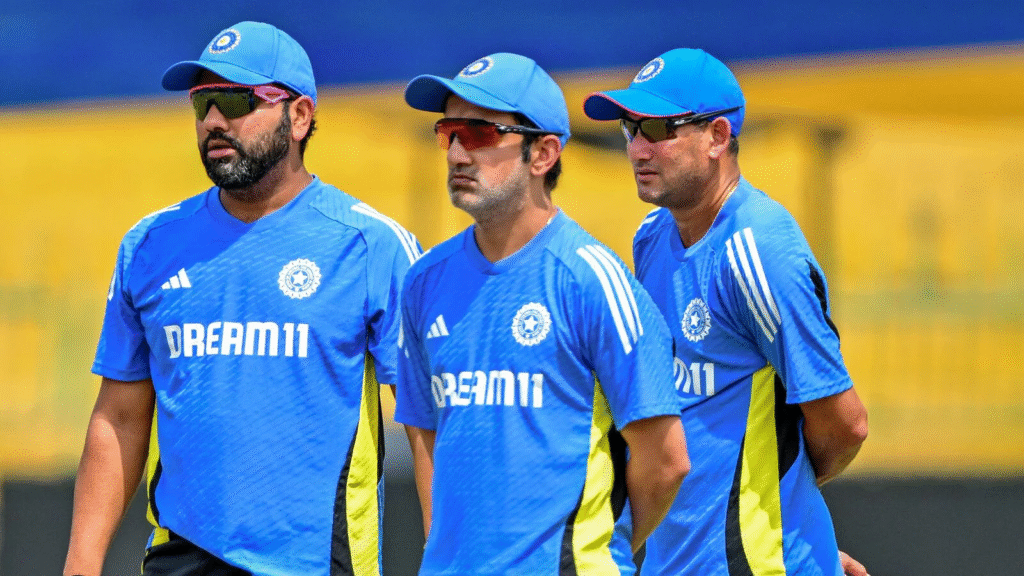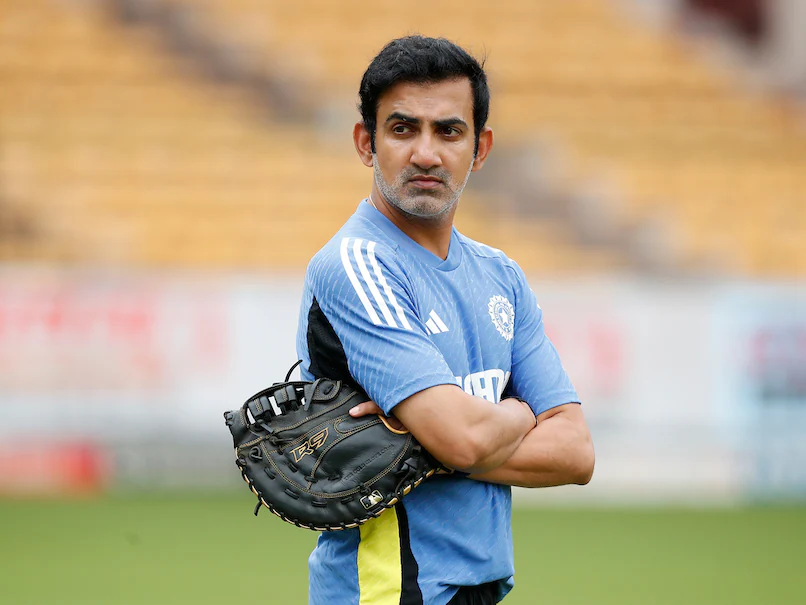
India’s cricket team is on the cusp of a transformational phase—one filled with uncertainty, opportunity, and immense responsibility. For over a decade, Virat Kohli and Rohit Sharma have been synonymous with Indian cricket, their stellar performances and leadership shaping the team’s successes across formats. But as both legends step back, voluntarily or otherwise, the Indian cricket fraternity faces a daunting reality.
Gautam Gambhir, former opener and now a respected voice as India’s head coach, recently shared candid insights into the difficulties the team faces in this new era. His remarks are a clear-eyed acknowledgment of the roadblocks that lie ahead but also a hopeful vision for the future. This blog delves into Gambhir’s reflections, the legacy of Kohli and Rohit, the emerging talents, and what lies ahead for Indian cricket.
The End of an Era: Reflecting on the Kohli-Rohit Epoch
It is impossible to overstate the impact Virat Kohli and Rohit Sharma have had on Indian cricket. Together, they have been the heartbeat of the Indian batting order, their combined runs contributing to countless victories and memorable moments. Kohli, with his intense passion and relentless pursuit of excellence, revolutionized the way modern cricket batsmen approach chasing targets. Rohit’s elegance and ability to dominate bowlers have produced some of the most breathtaking innings in recent memory.
For many fans and cricket analysts, Kohli and Rohit represented a near-perfect blend of aggression, technique, and calm under pressure. Their leadership roles further cemented their status—not just as players but as mentors, motivators, and role models.
Gautam Gambhir, who himself was part of a transformative Indian team that laid the groundwork for future successes, understands what losing such figures means. He has openly described the absence of Kohli and Rohit as “a huge challenge” that will test the mettle of the team in the coming years.
The era they dominated was not just about runs; it was about setting standards, raising the bar, and creating a culture of excellence. Their departure marks the end of an era, and the challenge now is to ensure that the team does not lose its identity or momentum.
The Challenge of Replacing Legends
Replacing Virat Kohli and Rohit Sharma is not a straightforward task. These players were not merely prolific run-scorers but leaders in every sense of the word. They carried the team’s expectations on their shoulders, guided younger players, and often changed the course of matches singlehandedly.
Gambhir’s remarks highlight a vital truth in team sports: losing key players affects not only on-field performance but also the psychological fabric of the team. The void left by such stalwarts creates a vacuum of experience and confidence that cannot be filled overnight.
He emphasized that the team must prepare for this transition thoughtfully and patiently. “It’s not about simply finding batsmen to fill their shoes,” Gambhir explained. “It’s about building a new foundation where young players develop the resilience, skill, and temperament to perform consistently on the international stage.”
The coaching staff, including Gambhir, is well aware that expecting instant results is unrealistic. The new generation must be given the time and support to grow, fail, learn, and eventually flourish.
The Immense Legacy of Kohli and Rohit: More Than Just Numbers
Kohli and Rohit’s contributions go beyond the runs they scored or records they broke. Their presence influenced the team’s overall approach and mindset. Kohli’s aggressive captaincy and insatiable hunger for success inspired the team to adopt a fearless style of play. Rohit’s calm and composed demeanor balanced this aggression, offering a steady anchor.
Together, they created a synergy that elevated the Indian batting unit to new heights. Their ability to perform in high-pressure situations—whether it was chasing targets in ODIs or setting the pace in Test matches—gave India an edge that was often decisive.
Gambhir, reflecting on their impact, noted that such players serve as more than role models—they are cultural icons within the sport. Their work ethic, preparation, and leadership are lessons that aspiring cricketers study and emulate.
This legacy is a double-edged sword; while it inspires, it also sets a high benchmark for successors. The challenge for the new players is not to imitate but to evolve, creating their own identities while respecting the foundations laid by these legends.
Emerging Talent: A New Generation Ready to Rise
Despite the challenge of losing two of cricket’s finest, India’s cricketing pipeline remains robust. The Indian Premier League (IPL), often described as a crucible of talent, has introduced a wave of young players who have dazzled with their skills and maturity beyond their years.
Players like Shubman Gill, Prithvi Shaw, and Ishan Kishan have shown glimpses of greatness. Their aggressive stroke play, adaptability, and temperament indicate that the future could be bright. Additionally, all-rounders such as Rishabh Pant and Hardik Pandya bring balance and flexibility to the team.
Gambhir has consistently praised these youngsters but tempers expectations with realism. “Talent alone is not enough,” he said. “These players must build experience and develop the mental toughness required to succeed at the highest level.”
This blend of youth and experience is the key to India’s success moving forward. While Kohli and Rohit provided stability and runs, the new generation is expected to inject fresh energy and innovation into the side.
Leadership Dynamics: Finding New Voices
One of the more subtle yet significant challenges India faces is in leadership. Kohli and Rohit have led the team through various campaigns, providing tactical acumen and emotional support. Their leadership extended beyond the captaincy—both were mentors to younger players and important figures in the dressing room.
Gambhir pointed out that leadership now needs to be redistributed and nurtured carefully. The emergence of players like KL Rahul, Rishabh Pant, and Hardik Pandya as leaders will be essential in maintaining team cohesion and drive.
New captains will have to strike a balance between respecting the legacy of their predecessors and charting their own paths. This leadership transition is delicate and requires support from the entire cricketing establishment.
Gambhir also emphasized the importance of shared leadership, where responsibility is distributed rather than resting on a single individual. This approach builds resilience within the team and prepares multiple players to handle pressure.
Coaching Philosophy: Preparing for a New Challenge
As India moves into this transitional phase, coaching methods must adapt to suit the evolving team composition. Gambhir’s approach reflects modern cricket’s complexities, where physical fitness, mental resilience, tactical flexibility, and technical proficiency all play a role.
He stressed that coaching is no longer limited to technical drills but involves holistic development—building players who can think clearly under pressure, manage expectations, and recover from failures swiftly.
Fitness standards are higher than ever, and players are expected to maintain peak physical condition to endure long tours and grueling schedules. Mental conditioning, too, is a focus, with sports psychologists becoming integral to team preparation.
Gambhir’s insights reveal that the coaching staff’s job is to create an environment where players are empowered to express themselves freely yet responsibly, fostering creativity alongside discipline.
The ICC Challenge: High Stakes and High Expectations
International cricket offers no respite; with the ICC Cricket World Cup, T20 World Cup, and other major tournaments on the horizon, India is under intense scrutiny. Gambhir’s candid remarks serve as a reality check but also a rallying cry for the team and fans.
The pressure to maintain India’s stature in world cricket is immense. The absence of Kohli and Rohit, who often delivered under pressure, amplifies this challenge.
Team management is actively exploring different combinations, batting orders, and bowling strategies to maximize strengths. There is a clear intent to build a team that is adaptable, fearless, and capable of performing across diverse conditions.
Gambhir’s belief in the team’s depth and hunger for success remains unshaken. “Challenges are opportunities in disguise,” he said. “This is a chance for India to rewrite its cricketing narrative and create new heroes.”
Fans’ Perspectives: Nostalgia Meets Hope
The cricket fan base in India is famously passionate, and the news of Kohli and Rohit’s absence has elicited a spectrum of emotions. There is deep nostalgia for the moments these players have created—the centuries, the thrilling chases, the iconic celebrations.
Social media platforms are abuzz with tributes and discussions about what the future holds. While some fans express apprehension, many remain optimistic about the emerging talent pool.
Gambhir’s honesty in acknowledging challenges has been well-received, as fans appreciate transparency. It bridges the gap between expectations and realities, encouraging supporters to embrace change patiently.
This period, though tinged with sadness for some, also carries the thrill of new possibilities—a chance to witness the rise of a fresh generation of cricketing stars.
A Vision for the Future: Embracing Transition with Determination
Change is inevitable in sports, but how a team navigates transition defines its legacy. Gambhir’s reflections highlight that while losing legends is difficult, it is also a necessary phase in the evolution of Indian cricket.
The focus now is on harnessing young talent, fostering leadership, adapting strategies, and building a resilient team culture. This requires time, effort, and collective belief.
Gambhir’s message is clear: India must not rush to replace Kohli and Rohit superficially but must invest in creating a new core that can sustain success over the next decade.
The journey ahead is challenging, but with the right vision and commitment, Indian cricket can continue to flourish and inspire millions.
The Broader Impact: What This Means for Indian Cricket and Beyond
The significance of this transition extends beyond the cricket field. Indian cricket is a cultural phenomenon, influencing millions of lives and uniting diverse populations. The rise or fall of the team affects not just sport but national morale and identity.
Gambhir’s insights remind us that cricket is more than a game—it is a reflection of societal values like perseverance, teamwork, and leadership.
As India navigates this phase, the lessons learned will shape future generations—not only of cricketers but of fans, administrators, and aspiring leaders.
The resilience, adaptability, and spirit displayed during this period could become a model for other teams facing similar challenges.
Final Thoughts: An Era Ends, A New Chapter Begins
The cricketing world watches as India embarks on a journey marked by both loss and hope. The absence of Virat Kohli and Rohit Sharma is a poignant moment, symbolizing the end of a golden chapter.
Gautam Gambhir’s candid reflections serve as a guidepost for this transition, acknowledging the difficulties while highlighting the opportunities.
The future belongs to those who prepare, adapt, and believe. India’s cricketing tradition of excellence, combined with its reservoir of talent and leadership potential, promises a compelling story in the years to come.
As fans, analysts, and players, embracing this change with patience and optimism will be crucial. The legends may have stepped aside, but the spirit of Indian cricket remains vibrant and ready to write new histories.

